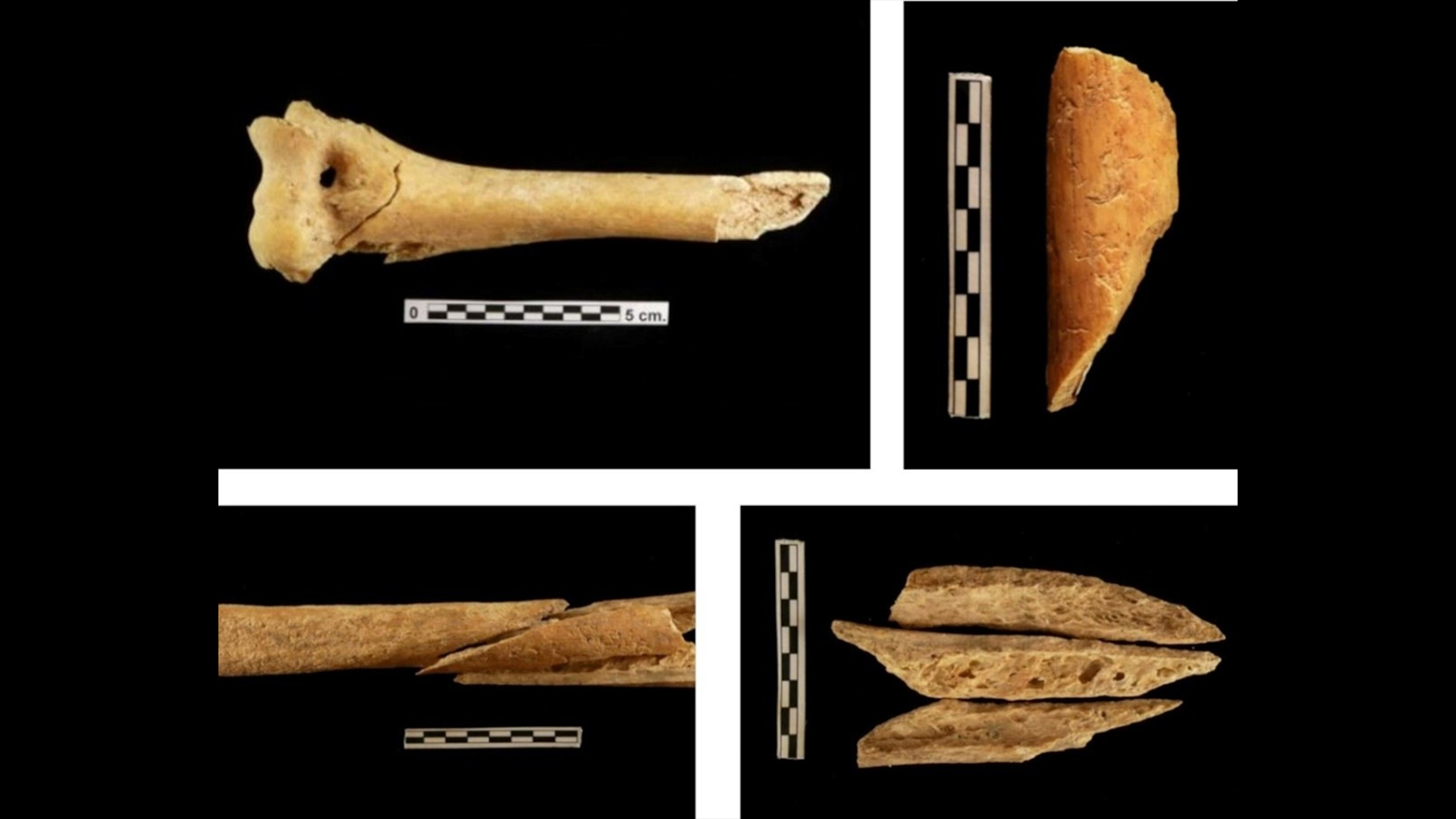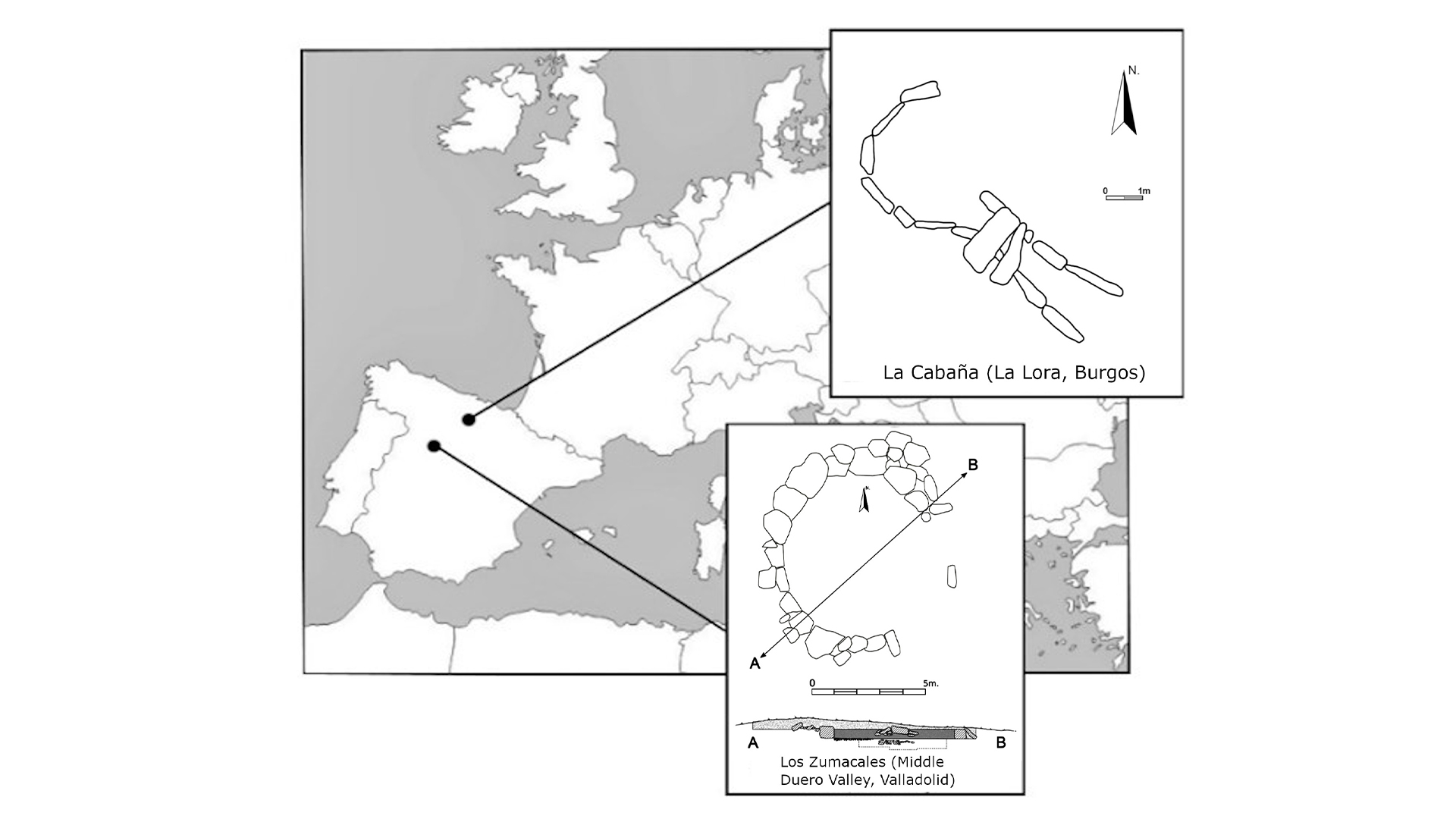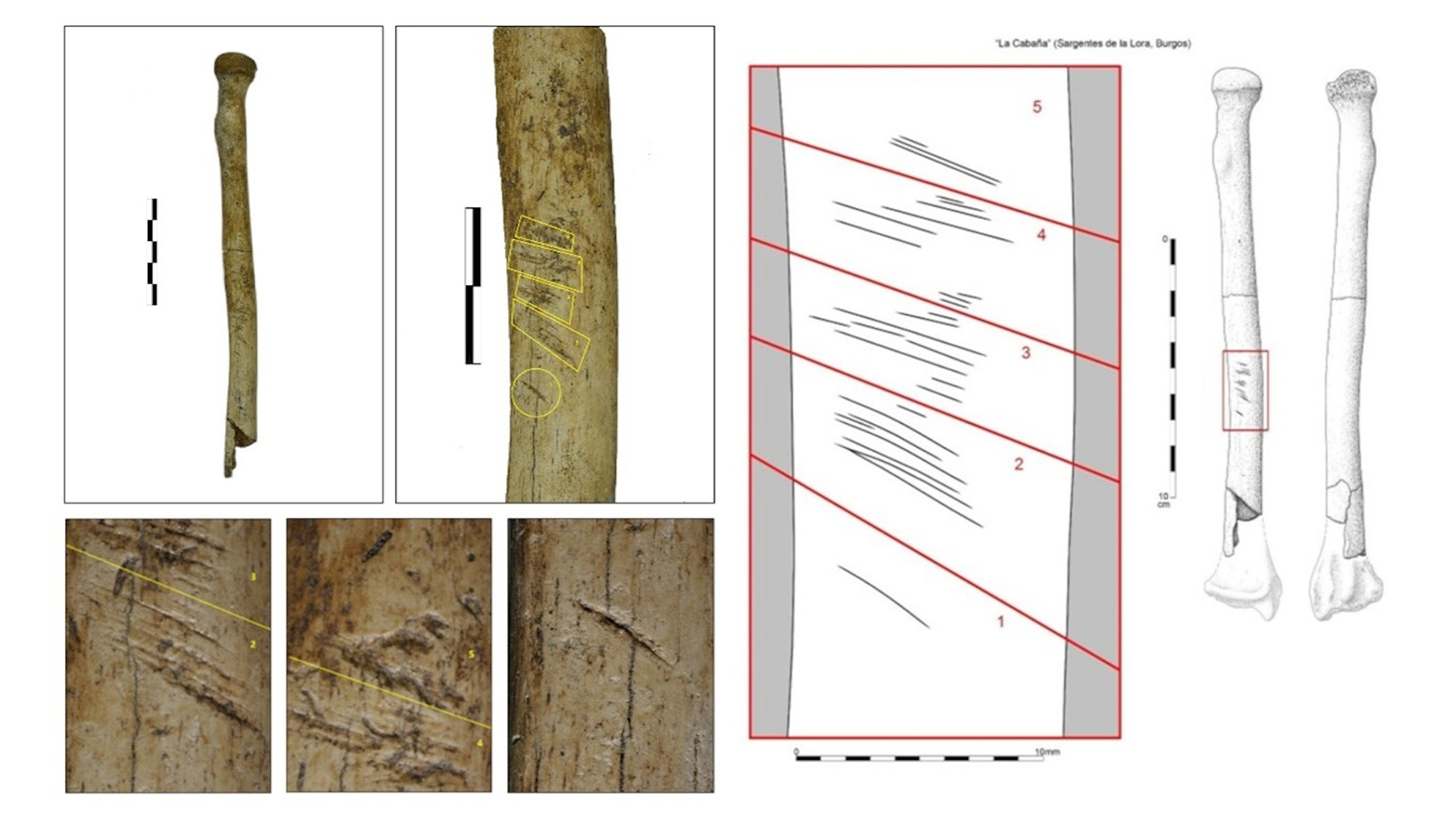
Archaeologists in Spain have discovered evidence that ancient people defleshed and dismembered corpses around 6,000 years ago. But these aren't clues to an ancient murder: Instead, the bone injuries are more likely related to funerary practices that occurred just after death.
Decades ago, archaeologists unearthed two large Neolithic stone tombs in northern Spain dating to the fourth millennium B.C. that contained the remains of more than two dozen men, women and children, in addition to flint arrowheads, bone awls, stone tools and pottery fragments. Now, a new analysis of the people's bones has revealed that a huge number of them were fractured and fragmented perimortem — around or just after the time of death.
Researchers described the new findings from the tombs at Los Zumacales and La Cabaña in a study published Dec. 1 in the International Journal of Osteoarchaeology.

Between 70% and 90% of the bones had been fractured, according to the researchers, including arm bones with "butterfly-shaped" fractures that resulted from a force perpendicularly applied to fresh bone. Impact marks were found on some of the bones as well, indicating the application of percussive or banging force. V-shaped cut marks were also discovered, likely made by people using stone tools to deflesh the dead.
While previous studies suggested the skeletons represented burials that were cleaned up or moved aside after some time had passed, the researchers of the new study proposed that the fractures and cut marks were part of a "death management process" that people employed as needed to deal with their deceased compatriots.
"It is difficult to interpret the motivation for these practices," Angélica Santa-Cruz, an archaeologist at the University of Valladolid in Spain, told Live Science in an email. The practices may have been "aimed at accelerating the processes of decomposition of the corpse when necessary," she said, and "some of these bones could have been worshipped as funerary objects or relics."

However, the researchers were unable to rule out that people engaged in funerary cannibalism. Consuming the flesh of the dead is an ancient human behavior, with many instances found across northwestern Europe, particularly during the Upper Palaeolithic period (35,000 to 10,000 years ago). Fracture patterns on the bones at Los Zumacales in particular could reflect funerary cannibalism — also called endocannibalism or anthropophagy — but "such a claim must be made with great caution," the authors wrote in the study.
The sites have few other clues to help clarify the burial practices. Little is known of the lives of these Neolithic people because few habitation areas have been found. Santa-Cruz said the local people likely grew crops and foraged for food, living a semi-nomadic lifestyle focused on animal husbandry.
Jess Beck, an archaeologist at University College Dublin who was not involved in the study, told Live Science in an email that the authors deserve credit for studying the numerous bone fragments. Their examination tackles "how and perhaps why prehistoric communities were manipulating human bones as part of multi-stage mortuary rituals," Beck said. In particular, the study presents "important new evidence for perimortem processing in the Late Neolithic of the Iberian Peninsula," she said.
Given the new information Santa-Cruz and study co-author Javier Velasco-Vázquez, of the Historical Heritage Service of Gran Canaria, Spain,, found when taking a very close look at the fractured bones, they suggest that similar studies on bones from other tombs in the area are necessary to better understand the diversity of funerary practices that took place at these sites.







